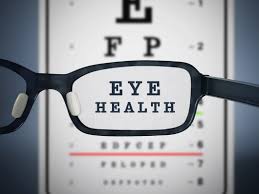
Types of Cataracts and Prevention
June is Cataract Awareness Month, and in case you missed our first blog post earlier this month detailing cataracts, astigmatism, and presbyopia, you can review it here.
Did you know there are various types of cataracts? Cataracts are not a one-size-fits-all health issue. The three main types of cataracts are nuclear, cortical, and posterior subcapsular cataracts.
Nuclear Cataracts
Nuclear cataracts are the most common type of cataract that doctors see. They form in the center of the lens, also known as the nucleus. Over time, the lens hardens and turns yellow or even brown. It becomes difficult to see small details, colors get less rich, and halos appear around bright objects at night.
Cortical Cataracts
Cortical cataracts are characterized by white, wedge-like opacities that start in on the outside of the lens, also known as the cortex, and work their way towards the center of the lens. The main symptom of these cataracts is glare. It can be difficult to drive at night, and vision might seem hazy. It can also become difficult to see colors and to gauge depth perception accurately.
Posterior Subcapsular Cataracts
Posterior subcapsular cataracts are the fastest-forming type, as symptoms can form and worsen within months. These cataracts develop inside the back of your lens capsule — the part of your eye that surrounds the lens and holds it in place. Furthermore, the cataracts form directly in the path of light as it passes through the lens.
Other Types of Cataracts
Outside of the three main types, there are several more types of cataracts. Two others are congenital and traumatic cataracts.
Congenital (Pediatric) Cataracts
Congenital cataracts are cataracts that exist from birth or early childhood. Many of these are genetic, but some can occur due to serious in-utero or early childhood-diseases.
Traumatic Cataracts
Traumatic cataracts form as the result of some type of trauma or injury to the eye. These cataracts may form immediately or only appear years after the injury.
What is the Best Prevention for Cataracts?
Is there anything that can be done to help prevent cataracts from forming? While there isn’t anything that can be done about genetics or overall age, there are some steps you can take to help with the prevention or progression of cataracts.
- Avoid prolonged exposure to direct sunlight. Think of your eyes as you do the rest of your face! They need to be protected as well when in the sun. So, when applying your SPF sunscreen, ensure you are also wearing protective sunglasses!
- Eat a diet rich in omega 3s and vitamins A, C, and E to prevent or slow the progression of cataracts.
- Visit the eye doctor every year to ensure no changes in your eyes’ health.
Where to Find an Eye Doctor for Cataracts in Raleigh, NC
If you are looking for an eye doctor in Raleigh, NC, or nearby areas such as Brier Creek and Wake Forest, you can trust the experts at Kelly Eye Center. Our experienced cataract surgeons in Raleigh, NC, offer personalized cataract surgery to suit your needs and preferences. Whether you need a standard cataract surgery or a premium lens implant, we can help restore your vision and quality of life.
Call us today at 919-282-1100 or schedule your cataract consultation appointment online.
Please note that the suggestions provided in this blog are for general informational purposes only and may not be suitable for your specific insurance plan and macular degeneration needs. It is important to consult a qualified healthcare professional for personalized advice and treatment.

